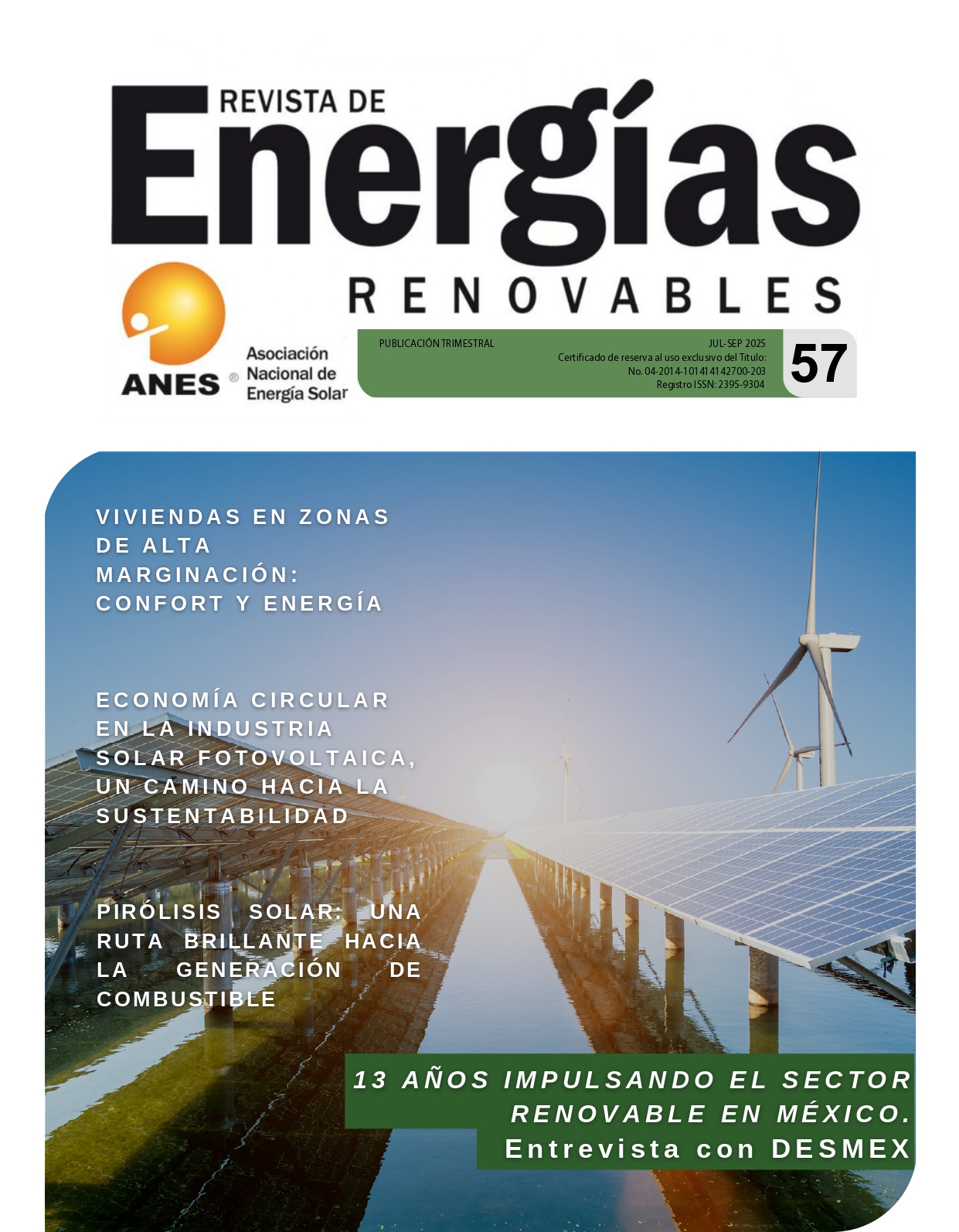Correlación y métricas en la validación de CFD con mediciones in situ para el análisis del recurso eólico urbano
DOI:
https://doi.org/10.59730/rer.v12n57a4Palabras clave:
Energía eólica, Simulación CFD, Zonas Urbanas, Sistema LiDARResumen
El incremento de la demanda energética ha intensificado el uso de combustibles fósiles, aumentando la contaminación ambiental. Entre las alternativas sostenibles, la energía eólica tiene alto potencial; sin embargo, su aprovechamiento en entornos urbanos es limitado debido a la complejidad del viento en áreas densamente edificadas. Este estudio tiene como objetivo desarrollar y evaluar una metodología basada en CFD, validada mediante mediciones in situ, para reproducir las condiciones de viento en entornos urbanos con topografía accidentada y analizar el recurso eólico urbano. La metodología permite visualizar áreas con concentración de viento, facilitando la microlocalización de aerogeneradores de baja potencia. Como parte del desarrollo, se utilizó el modelo de turbulencia estándar k–epsilon para modelar el perfil de viento, generado a partir de mediciones LiDAR. Los datos del sensor ultrasónico se compararon con la potencia registrada por el aerogenerador instalado en la misma ubicación, evaluando la interacción del viento con la turbina. Además, los resultados del sensor ultrasónico se validaron con las velocidades de viento obtenidas mediante CFD, cuya alta resolución espacial permite capturar variaciones locales y zonas específicas de concentración de viento. La concordancia entre simulaciones y mediciones se evaluó mediante coeficientes de correlación y métricas estadísticas (MAE, RMSE y MAPE), obteniéndose r = 0.953 para CFD–sensor ultrasónico y r = 0.914 para CFD–aerogenerador, mostrando alta correspondencia. Estos hallazgos respaldan el uso de CFD complementado con mediciones experimentales como herramienta confiable para caracterizar el recurso eólico urbano y facilitar la planificación estratégica de la ubicación de aerogeneradores de baja potencia.
Citas
• Agency, I. E. (2024), World Energy Outlook 2024, IEA, Paris, France. URL: https://www.iea.org/reports/world-energy-outlook-2024
• Baitureyeva, A., Yang, T. & Wang, H. (2025), ‘Development of machine learning-aided rapid cfd prediction for optimal urban wind environment design’, Sustainable Cities and Society 121, 106208.
• Blocken, B., Stathopoulos, T. & Carmeliet, J. (2007), ‘Cfd simulation of the atmospheric boundary layer: wall function problems’, Atmospheric Environment 41, 238–252.
• Chu, R. & Wang, K. (2025), ‘Cfd in urban wind resource assessments: A review’, Energies 18(10), 2626.
• IPCC (2023), Climate Change 2023: Synthesis Report. Contribution of Working Groups I, II and III to the Sixth Assessment Report of the Intergovernmental Panel on Climate Change, IPCC, Geneva, Switzerland. URL: https://www.ipcc.ch/report/ar6/syr
• Launder, B. E. & Spalding, D. B. (1974), ‘The numerical computation of turbulent flows’, Computer Methods in Applied Mechanics and Engineering 3(2), 269–289. URL: https://doi.org/10.1016/0045-7825(74)90029-2
• Li, J., You, W. & Ding, W. (2024), ‘Evaluation of the cfd simulation method for wind prediction in complex urban spatial forms’, International Journal of Environmental Science and Technology .
• Mei, S. J., Hang, J., Fan, Y., Yuan, C. & Xue, Y. (2025), ‘Cfd simulations on the wind and thermal environment in urban areas with complex terrain under calm conditions’, Sustainable Cities and Society 118.
• Nugraha, A. D., Garingging, R. A., Wiranata, A., Sitanggang, A. C., Supriyanto, E., Tanbar, F. & Muflikhun, M. A. (2025), ‘Comparison of “rose, aeroleaf, and tulip” vertical axis wind turbines (vawts) and their characteristics for alternative electricity generation in urban and rural areas’, Results in Engineering 25.
• Streichenberger, B., Chakir, R., Jouy, B. & Waeytens, J. (2021), ‘Simulation and validation of cfd turbulent airflow at pedestrian level using 3d ultrasonic anemometer in the controlled urban area “sense -city”’, Journal of Wind Engineering and Industrial Aerodynamics 219, 104801.
• Tabib, M., Rasheed, A. & Kvamsdal, T. (2015), ‘Investigation of the impact of wakes and stratification on the performance of an onshore wind farm’, Energy Procedia 80, 302–311.
• Talwar, T. & Yuan, C. (2024), ‘Impact of natural urban terrain on the pedestrian wind environment in neighborhoods: A cfd study with both wind and buoyancy-driven scenarios’, Building and Environment 261.
• Toja-Silva, F., Kono, T., Peralta, C., Lopez -Garcia, O. & Chen, J. (2018), ‘A review of computational fluid dynamics (cfd) simulations of the wind flow around buildings for urban wind energy exploitation’, Journal of Wind Engineering and Industrial Aerodynamics .
• Townsend, J. F., Xu, G. & Jin, Y. (2024), ‘Roughness constant selection for atmospheric boundary layer simulations using a k- sst turbulence model within a commercial cfd solver’, Advances in Wind Engineering 1, 100005.
• Wang, H. S. S., Blocken, B. & Lin, Z. (2025), ‘Cfd simulation of the stratified atmospheric boundary layer: Consistency between moninobukhov similarity theory and the standard k- model’, Building and Environment 267.
• Wang, Q., Wang, J., Hou, Y., Yuan, R., Luo, K. & Fan, J. (2018), ‘Micrositing of roof mounting wind turbine in urban environment: Cfd simulations and lidar measurements’, Renewable Energy 115, 1118–1133
Descargas
Publicado
Número
Sección
Licencia
Derechos de autor 2025 Energías Renovables

Esta obra está bajo una licencia internacional Creative Commons Atribución 4.0.





